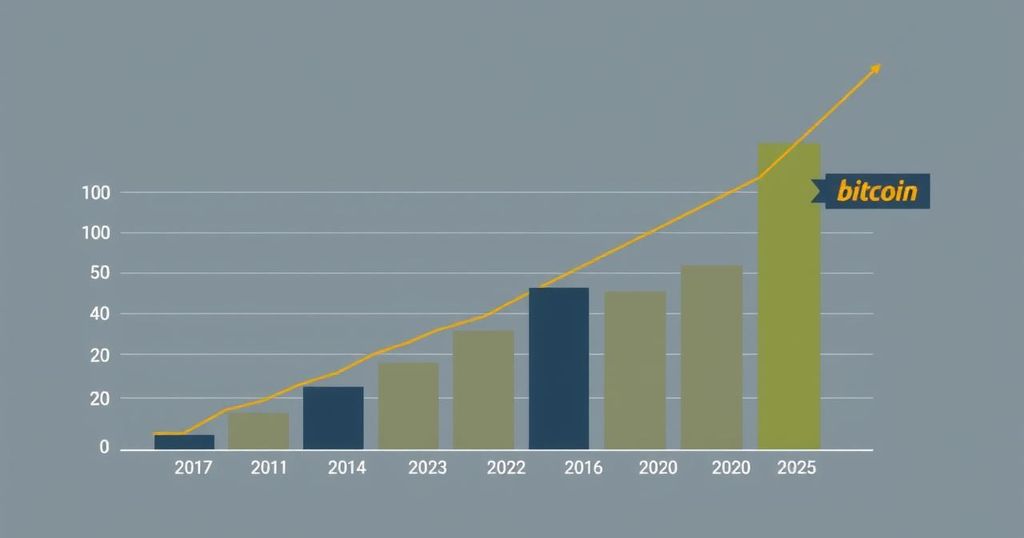Cryptocurrency Market Contraction in Q1 2025: Key Highlights and Trends
In Q1 2025, the crypto market experienced a significant contraction, with capitalisation declining by 18.6% and average daily trading volumes down by 27.3%. Bitcoin increased its dominance, though Ethereum faced severe losses. The launch of political meme coins briefly spiked interest before a significant rug pull eroded confidence, leading to increased activity in stablecoins and adjustments in centralised and decentralised exchanges.
The beginning of 2025 presented a stark contrast for the cryptocurrency market after a buoyant 2024, with a notable contraction observed in the first quarter. The latest Crypto Industry Report by CoinGecko, updated in April 2025, revealed that the total cryptocurrency market capitalisation fell by 18.6%, settling at $2.8 trillion from a peak of $3.8 trillion on January 18, just prior to Donald Trump’s inauguration.
In the first quarter, the crypto market experienced a decline exceeding $633 billion in total capitalisation. Following its annual high in mid-January, the market faced a downturn that continued until March’s end. Furthermore, average daily trading volumes witnessed a dramatic drop of 27.3%, decreasing from $200.7 billion to $146 billion, indicating reduced investor engagement. Bitcoin (BTC), however, gained market dominance, rising to 59.1%—the highest since Q1 2021—mainly at the expense of altcoins, which had more pronounced losses.
Stablecoins like Tether (USDT) managed to increase their market presence to 5.2%, and USDC reclaimed the seventh rank, surpassing Dogecoin (DOGE). Notably, Bitcoin reached an all-time high of $106,182 on January 22, 2025, before falling to close the quarter at $82,514—a decline of 11.8%. Despite this downturn, BTC outperformed other risk assets such as the NASDAQ and S&P 500, whereas gold rose by 18%, reaffirming its status as a safe haven.
The quarter was exceptionally tough for Ethereum (ETH), which saw its price plummet by 45.3%, dropping from $3,336 to $1,805. This decline eliminated all gains from 2024 and reverted ETH to its 2023 levels. Moreover, daily trading volumes fell from $30 billion to $24.4 billion, indicating considerable selling pressure amidst the bear market. Early enthusiasm surrounding meme coins linked to the political sphere waned quickly after a significant debacle involving the LIBRA coin, prompting a loss of investor confidence.
In the first quarter of 2025, the top ten centralised exchanges (CEX) recorded a volume of $5.4 trillion, marking a 16.3% fall from the previous quarter. Binance retained its leadership with a 40.7% market share but saw its volumes decrease from over $1 trillion to $588.7 billion. Contrastingly, HTX was the only exchange to show growth, with an increase of 11.4%. Upbit and Bybit experienced steep declines of 34% and 52.4%, respectively, largely due to a hacker attack impacting Bybit.
Solana has maintained its leading position within decentralised exchanges (DEX), commanding 39.6% of market share in Q1 2025. During the peak of political meme coin interest, Solana’s trade volume hit $184.8 billion in January, though its share fell to 23.4% by March as Ethereum reclaimed the top spot with 30.1%. The total value locked (TVL) across multichain DeFi decreased by 27.5%, influenced by altcoin devaluation. Ethereum’s TVL fell by 35.4%, while Solana and Base recorded declines of 23.5% and 15.3%, respectively.
Emerging DeFi player Berachain notably achieved a TVL of $5.2 billion shortly after its launch on February 6. Its rapid success was attributed to the Boyco pre-deposit vaults, which attracted approximately $2.3 billion in liquidity on launch day. Overall, Q1 2025 marked a stabilisation phase for the cryptocurrency sector, with Bitcoin showing resilience, while Ethereum and altcoins suffered significant setbacks. Although investor confidence has been shaken, new entrants like Berachain suggest potential for market evolution amid ongoing uncertainty.




Post Comment